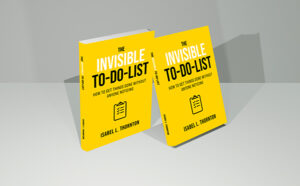Self-care advice is everywhere these days—bubble baths, yoga, journaling, digital detoxes. But what happens when the typical advice doesn’t fit your neurotype? For autistic adults, conventional self-care strategies often miss the mark. What’s marketed as “relaxing” can actually be overstimulating, exhausting, or irrelevant.
The good news? You can build a self-care plan—but it has to be one that honors your sensory needs, energy limits, and communication style. In Embracing Self-Care for Autistic Burnout: Your comprehensive resource for managing autistic burnout, we outline how to create self-care routines that actually work for autistic individuals—not just for the neurotypical majority.
Step 1: Define What Rest Looks Like for You
Rest isn’t one-size-fits-all. For some, it means alone time in a quiet room. For others, it could be repetitive movement, special interests, or listening to a favorite soundscape. If a “spa day” sounds overwhelming, that’s okay. Your rest doesn’t have to look like anyone else’s.
In the book, autistic adults share strategies like:
- Creating a “quiet corner” with familiar textures
- Using special interests as a grounding ritual
- Watching comfort shows without social demands
- Saying no to social events—without guilt
Step 2: Identify Non-Negotiables
Autistic burnout often stems from pushing through discomfort for too long. One way to prevent this is by building “non-negotiables” into your routine—daily practices that help you recharge.
These might include:
- Wearing noise-canceling headphones in public
- Using weighted blankets or fidget tools
- Scheduling downtime after social interactions
- Having safe foods always available
In Embracing Self-Care for Autistic Burnout, we help readers develop a “sensory audit” to identify what feels safe and what drains energy—so your self-care plan reflects your real needs.
Step 3: Build Flexibility Into Routine
Autistic individuals often benefit from routine—but burnout can make rigid plans feel overwhelming. Instead of strict schedules, aim for structured flexibility. This means having backup plans, low-demand options, and permission to rest when needed.
For example:
- “If I can’t do a full walk, I’ll sit outside for 5 minutes.”
- “If I can’t cook, I’ll use my emergency meal stash.”
- “If I miss one mindfulness practice, it’s not failure.”
These compassionate adjustments are key to long-term wellness.
Step 4: Track What Works—Gently
Tracking your self-care progress doesn’t need to be clinical or demanding. A simple check-in or journal entry can help you notice patterns: What days felt manageable? What practices helped you feel safer, calmer, or more energized?
In the book, you’ll find templates and low-stress trackers to help you stay connected to your needs without pressure or perfectionism.
“I finally created a routine that fits me—not what others think I should be doing.” – Amazon Reviewer
Build a Plan that Honors You
You don’t need another one-size-fits-all checklist. What you need is a plan rooted in your sensory preferences, emotional bandwidth, and lifestyle. That’s what Embracing Self-Care for Autistic Burnout is all about—helping you craft a recovery journey that’s yours.
🟢 Start building your plan today
💬 “More helpful than any therapy session I’ve had. It gets what it means to be autistic and burned out.”





